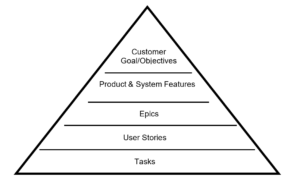How to Build a Story Map with Persona & User Stories
Organizations build various products to achieve certain outcomes. These can be to help support the growth of the organization, achieve its vision & mission, customer delight, regulatory obligations or to respond to new possibilities. The interesting point here is that customer or the different persons that can be derived may benefit from these outcomes or may get impacted as a result of action taken to achieve these outcomes. Thus, it is imperative to understand the value that is being delivered to the customer in the form of a product or service, benefits, or features when a product is designed.
What is a Persona?
A persona is profile of a user which represents needs of the customer, problems that they may face and their attributes like age, preferred social media channels etc. They help us understand the market segment and target market for a product or service that the organization is looking to improvise or launch.
The personas are usually based on findings from research on end-users of a system, potential customer research etc. It is essential to not create personas on poorly available data or unrealistic assumptions.
Why use Persona?
Personas are depicted as a form of a written document with attributes like age, profession, style of living, preferred social media channels, buying behavior, demographic etc. Personas can be end recipient of a product or could be negative user personas to understand who explicitly not to take into consideration when developing a product. Thus, they are the “characters” of user stories. This persona documentation helps to drive conversations around the product features, delivery, output, expectations and what not to address which in turn connects the customer profile with value proposition in a cohesive manner. This is the foundation for creating compelling products and services the customers would want to buy.
For example, an attribute on the persona could be that the customer wants to connect anytime anywhere with the website of your organization. A potential solution is to provide live chat functionality leveraging chat robots to handle common FAQs when the staff is not available to directly chat to the customer in off-line hours.
Another example could be the system solution of providing hints, tips and online step-by-step guides to assist a customer who wishes to perform steps required to say, set up an adverting campaign on the adverting platform website on his own without having to interact with customer service staff on chat or email.
How to translate Persons to User Stories?
Once the customer goals are defined, we can start planning out the product features that would be required to meet those objectives.
Each feature can then be broken down into epics, which leads to smaller user stories and ultimately tasks. A popular structure used to document user stories is “As a [Persona] I want to [action] so that [goal]”

What is a Story Map?
Story mapping is a visual exercise to capture the journey a customer takes with the product including activities and tasks they perform with the system to achieve certain goals or objectives. This helps teams to define work, identify holes and omissions, plan releases by assigning priority to stories/tasks in order to formulate plan of action.
There are a few models that can help the team in prioritizing namely,
- Stack Ranking
- Kano Model – Customer Dimensions of Satisfaction and Investment. Features in 4 categories: Performance, Must, Attractive, Indifferent
- MoSCoW Model – Must-have, Should-have, Could-have and Would-have features
- Cost of Delay – How time would impact outcomes
Conclusion
In order to maximize the value you deliver to customers, creating customer persona goes a long way. It is a critical step to put planning before product design which ultimately leads to a product which addresses the customer needs leading to greater uptake, loyalty and acceptance.



